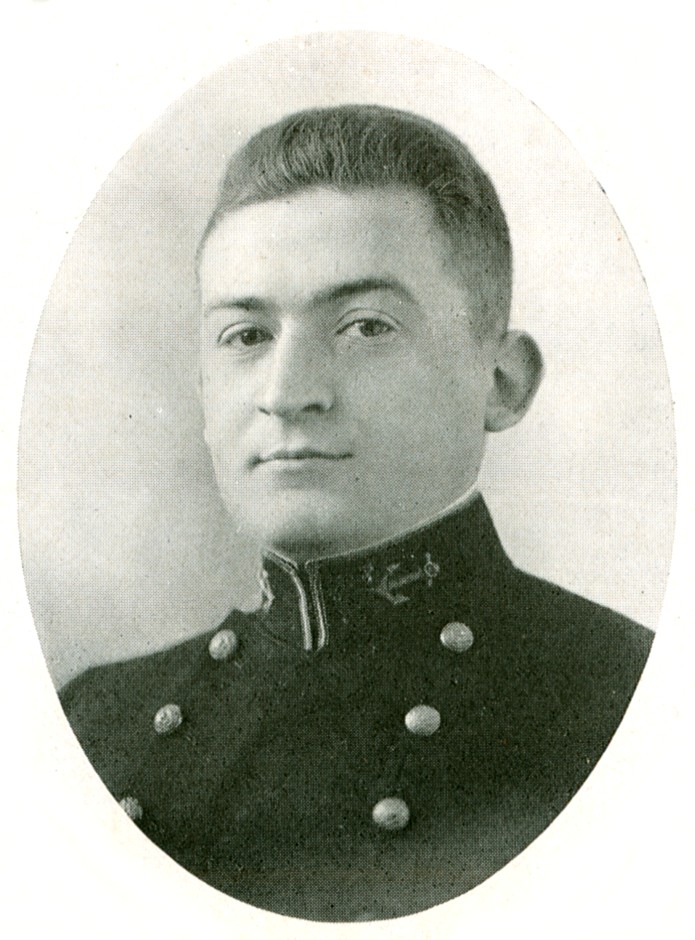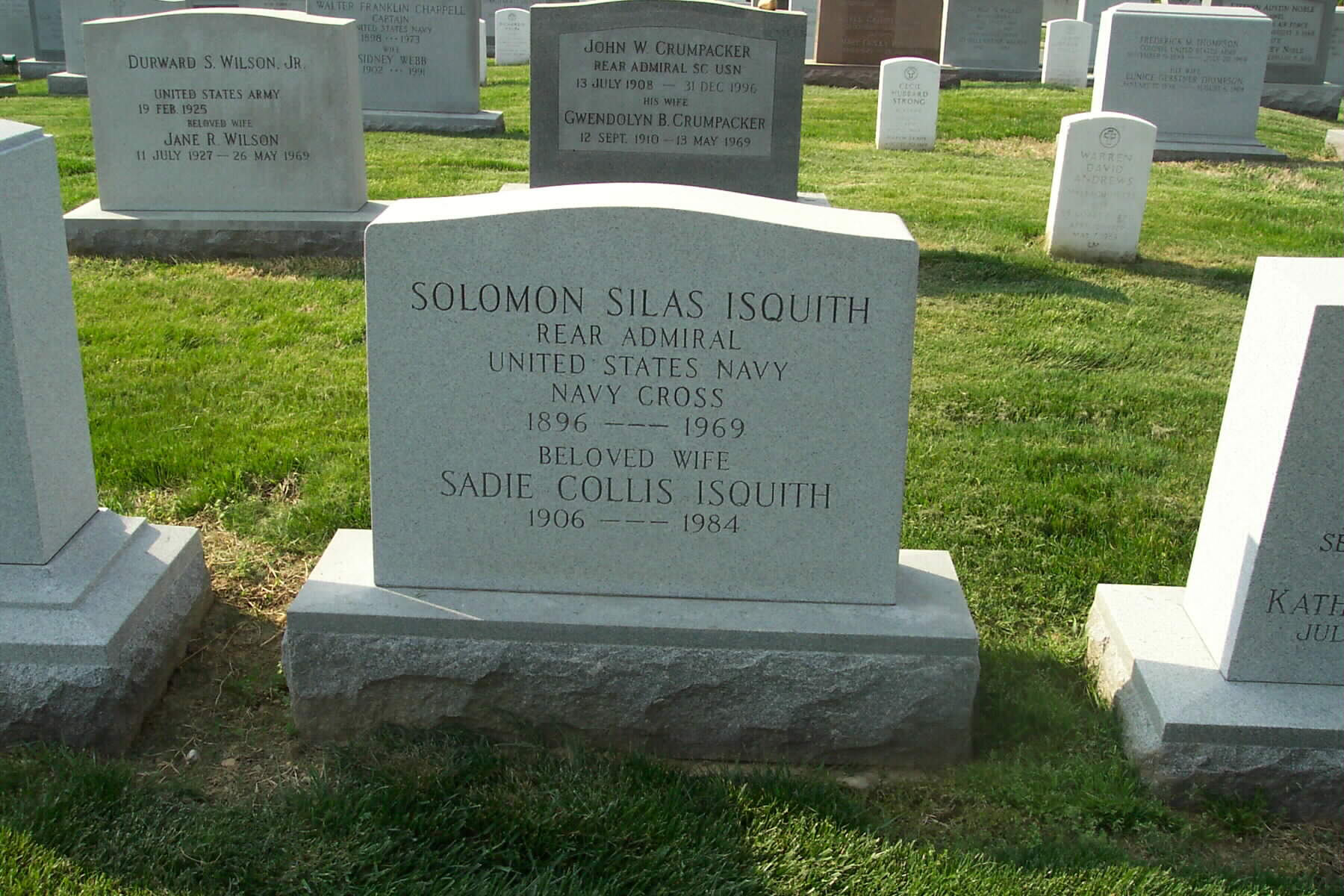A Jewish boy growing up in Brooklyn, Solomon Silas Isquith yearned to join the Navy. The problem was, at 5’4″ he was just a little too short to pass the physical at the United States Naval Academy. Solomon was not a quitter. He reapplied and the night before he was to re-take the physical, he tied flat irons to his ankles and placed them over the side of the footboard of his bed. He took the physical the next morning and miraculously had grown just tall enough to gain admission to Annapolis!
Twenty-one years later, Solomon served as the Commanding Officer of the US Battleship Utah, stationed in Pearl Harbor. The Utah became the first ship sunk by the Japanese on December 7, 1941. Escaping through a porthole, Solomon oversaw a rescue operation that led to the survival of more than 90 percent of the crew of the Utah. But his day was not yet over. Solomon organized a team of survivors and commandeered a small boat to sail across the harbor under enemy fire. Using torches, Solomon and his team cut through the hulls of capsized ships in the harbor, allowing many more sailors to escape certain death. For his actions, Solomon was awarded the Navy Cross and the Purple Heart.
Solomon went on to become a Rear Admiral in the Navy and was instrumental in the design of a national defense strategy that was used as a model for the Department of Homeland Security.
ISQUITH, SOLOMON SILAS
Citation:
The President of the United States takes pleasure in presenting the Navy Cross to Solomon Silas Isquith, Lieutenant Commander, U.S. Navy, for extraordinary heroism and distinguished service in the line of his profession as Commanding Officer of the Target Ship U.S.S. UTAH (AG-16), during the Japanese attack on the United States Pacific Fleet in Pearl Harbor, Territory of Hawaii, on 7 December 1941.
With extraordinary courage and disregard of his own safety, Lieutenant Commander Isquith directed the abandonment of the ship when it was capsizing rapidly, in such a cool and efficient manner that approximately ninety per cent of the crew were saved.
The conduct of Lieutenant Commander Isquith throughout this action reflects great credit upon himself, and was in keeping with the highest traditions of the United States Naval Service.
Captain David A. Isquith, USN (Ret.):
Solomon Silas Isquith, the number two son of seven boys and two girls born of the rather prolific marriage of Abraham and Pearl Itskovitz was the first to break tradition in the Brooklyn family. What nice Jewish boy, I ask you, would ever want to join the Navy, let alone think of entering the U.S. Naval Academy and becoming a professional naval officer? Uncle Sol, all 5 foot, 4 inches of him, was that nice, little Jewish boy.
Sol’s first attempt to pass the physical for the U.S. Naval Academy was a bust. No question about it: he was too short. Prior to reporting for a second attempt at passing the physical, he spent the night with flat irons tied to his ankles and hung over the end of the bed. Sol may have been short in build, but he wasn’t short on intelligence. He realized that the human form shrinks during the day due to gravity; thus, flat irons or no, he would be at his tallest early in the morning, and he was. Sol, “Little Izzy” to his classmates, was accepted into the Class of 1920.
After being commissioned an Ensign in 1919—the class was graduated a year early due to WWI—Sol served in river gunboats, destroyers, cruisers and battleships in the Far East and European arenas. At the outbreak of WWII he was in the Pacific Fleet, a Lt. Commander and the commanding officer of the old battleship, USS UTAH, home ported at Pearl Harbor. The UTAH was used as a target ship for dive bombing practice—using dummy bombs, of course—by the U.S. Army Air Corps. The UTAH, mistaken by the Japanese intelligence to be an aircraft carrier at the anchorage, was the first ship sunk during the Japanese attack on December 7, 1941. As the UTAH heeled over, Sol escaped through a porthole. Once clear of his ship, he organized a team of survivors and, while under fire from enemy aircraft, crossed the harbor in a small boat to ships that had “turned Turtle” (capsized). Once alongside, he and his team, with torches, cut holes through the capsized hulls, allowing trapped crewmembers to escape. For his heroism under fire, saving not only over 90 percent of the crew of the UTAH through his leadership and crews from other ships in the harbor, Sol was awarded the Navy Cross—second only to the Medal of Honor—and the Purple Heart.
Following the attack and promoted to the rank of Commander, Sol was placed in charge of salvage operations at Pearl Harbor. His engineering expertise in successfully raising sunken warships earned him further decorations. Following this assignment, he went on to command several ships in the Pacific Theater, was elevated to the rank of Captain and Commanding Officer of the troop ship, USS NOBLE, then to the flag rank of Commodore as SOPA (Senior Officer Present Afloat) over a division of troop ships. He was ultimately promoted to Rear Admiral and assigned as Commander, Brooklyn Naval Ship Yard prior to retirement after thirty years of service. During the naval career, Sol also completed law school and was responsible for authoring sections of the Navy’s Manual for Courts Martial.
Rear Admiral Isquith, USN (Ret.) was a major fundraiser for War Bonds and an active participant in and leading spokesman for the Jewish War Veterans. Sol was also credited with being the first to propose the concept of national defense, which has now come to be the Department of Homeland Security.
In 2002, U.S. Representatives Wexler and Gilman submitted the names of several highly decorated Jewish WWII veterans, my Uncle Sol included, to the Secretary of Defense for reevaluation and possible upgrading of their awards to the Medal of Honor. The submission was based on promotional bias against Jewish service members prior to and during the war and was due to persistent anti-Semitism. Pre-WWII promotions were slow for sure; however, taking 22 years for an Annapolis graduate to reach the rank of Lieutenant Commander was more than simply suspicious. It is gratifying to note that major strides have been made in the increased recognition of Jewish officers in the naval profession today, and I am delighted that for the first time in the history of the U.S. Naval Academy, a Jewish presence—the Commodore Uriah P. Levy Center and Jewish Chapel—is being constructed on the grounds. This is the first and, thus far, the only religious facility at the Academy other than the traditionally Protestant Memorial Hall. I like to believe that my uncle—one of the few Jews ever to reach flag rank in the U.S. Navy—was a catalyst in this recognition.
ISQUITH, SOLOMON
RADM USN
DATE OF BIRTH: 08/25/1896
DATE OF DEATH: 04/24/1969
BURIED AT: SECTION 4 SITE 2
ARLINGTON NATIONAL CEMETERY
Michael Robert Patterson was born in Arlington and is the son of a former officer of the US Army. So it was no wonder that sooner or later his interests drew him to American history and especially to American military history. Many of his articles can be found on renowned portals like the New York Times, Washingtonpost or Wikipedia.
Reviewed by: Michael Howard


